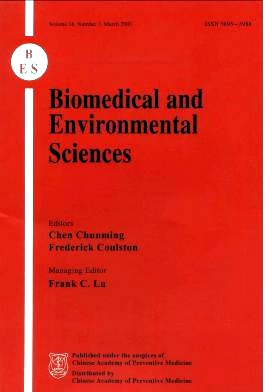Comparison of Di-n-methyl Phthalate Biodegradation by Free and Immobilized Microbial Cells
-
Key words:
- Priority pollutants /
- Phthalic acid ester /
- Immobilized microbial cells /
- Biodegradation
Abstract: Objective To compare the biodegradation of di-n-methyl pathalate by free and immobilizedmicrobial cells. Methods The enrichment and isolation technique was used to isolate themicroorganism. The PAV-entrapment method was utilized to immobilize the microorganisms. Thescanning electron microscophy (SEM) was used to observe the growth and distribution of microbialcells immobilized inside the PVA bead gels. The GC/MS method was used to identify the mainintermediates of DMP degradation. Results The microbial cells could grow quite well in PVA gel.The metabolic pathway did not change before and after immobilization of the microbial cells. Thedegradation rate of immobilized cells was higher than that of free cells. Conclusion Theimmobilized microbial cells possess advantages than free cells when applied to the biodegradation oftoxic organic pollutants.
| Citation: | JIAN-LONG WANG, YU-CAI YE, WEI-ZHONG WU. Comparison of Di-n-methyl Phthalate Biodegradation by Free and Immobilized Microbial Cells[J]. Biomedical and Environmental Sciences, 2003, 16(2): 126-132. |







 Quick Links
Quick Links
 DownLoad:
DownLoad: